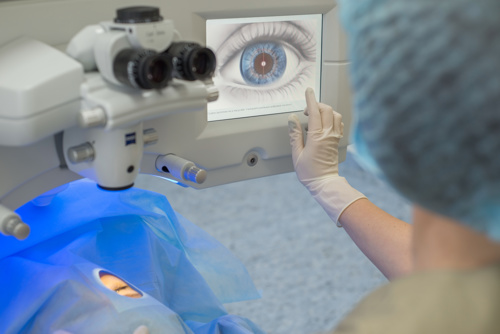Cataract, Refractive, Refractive Surgery
The Modern Era of Refractive Surgery
New technologies for screening and treatment qualify more patients for intervention.

Cheryl Guttman Krader
Published: Friday, March 1, 2024
Advances in both preoperative diagnostics and treatment technologies are helping overcome barriers to refractive surgery and broaden the pool of patients who can undergo a safe and successful procedure, according to Victor Derhartunian MD.
“Overall, we now have a refractive surgery solution for 99.9% of patients,” he said. “We just need to choose the right patient for the right procedure.”
Currently, LASIK and femto-LASIK remain the gold standard for refractive surgery, but LASIK use is limited by patient concerns about the potential for flap-related complications along with postoperative problems with dry eye and visual symptoms.
Concerns about dry eye appear justified based on the results of a poll of attendees at the session where Dr Derhartunian spoke and the 2022 ESCRS Clinical Surgery Trends survey. However, according to surgeons who completed the latter questionnaire, dry eye occurs less often after lenticule extraction than following LASIK.
“LASIK has a greater impact on corneal nerve anatomy compared to lenticule extraction, and dry eye symptoms are less severe and usually faster to recover after a lenticule extraction procedure,” said Dr Derhartunian.
Newer diagnostics technologies that offer automated screening for dry eye with measurement of noninvasive tear breakup time and other objective disease-related signs are helping to identify patients at greatest risk for dry eye problems after LASIK.
“These patients can be offered lenticule extraction or phakic IOL implantation that could possibly even avoid exacerbating dry eye after surgery,” he said.
The risk of developing corneal ectasia after surgery represents another issue that limits patients from undergoing LASIK. However, advances in diagnostics have also improved the precision of screening for keratoconus and identifying eyes at risk for post-LASIK corneal ectasia. These developments include the shift from the use of Placido topography to Scheimpflug imaging, improved software for cornea analysis with Scheimpflug imaging, anterior segment OCT with epithelial mapping, and the introduction of artificial intelligence-based techniques.
“If we recognise through the use of good diagnostics that an eye is at risk for ectasia after LASIK, we can decide not to do any surgery or choose a phakic IOL,” Dr Derhartunian said.
Improving outcomes of LASIK alternatives
Stating lenticule extraction is a safe, effective, and predictable treatment for high myopia and myopic astigmatism that will hopefully soon be approved for hyperopia, Dr Derhartunian said improvements in the pioneering femtosecond laser system used for lenticule extraction enabling centration and cyclorotation control are leading to better visual quality outcomes after this type of surgery. Now, lenticule extraction will also be an option using femtosecond lasers marketed by three other companies.
Phakic IOLs not only offer a refractive surgery option for eyes at risk for ectasia or dry eye after LASIK, he said, but they also expand the range of refractive surgery candidates because they can be used to treat higher degrees of myopia, astigmatism, and hyperopia along with presbyopia.
Today, only two options remain for phakic IOL implantation—the iris-fixated lens (Artisan) and the sulcus-supported implant (ICL). Outcomes with these devices have also improved due to changes in lens design and use of diagnostics that guide sizing and predict vault.
Dr Derhartunian presented at the 2023 ESCRS Congress in Vienna.
Victor Derhartunian MD is in private practice at EyeLaser Clinics in Vienna, Austria; Zurich, Switzerland; and SwissLaser Clinics in Poland. VD@EyeLaser.at
